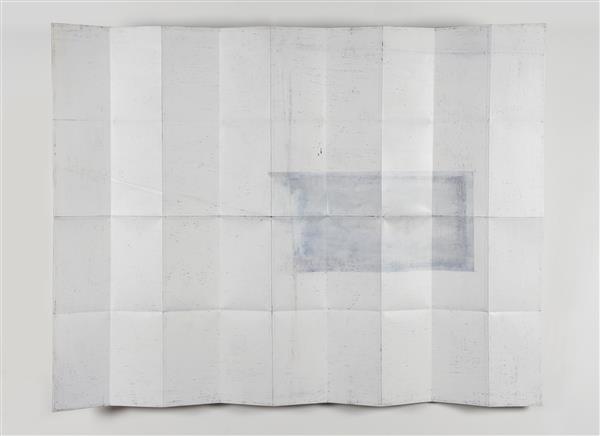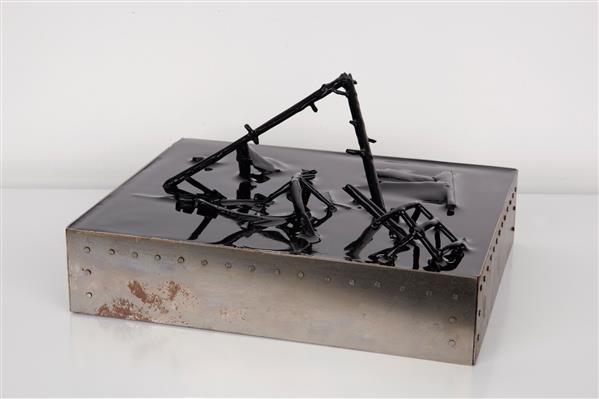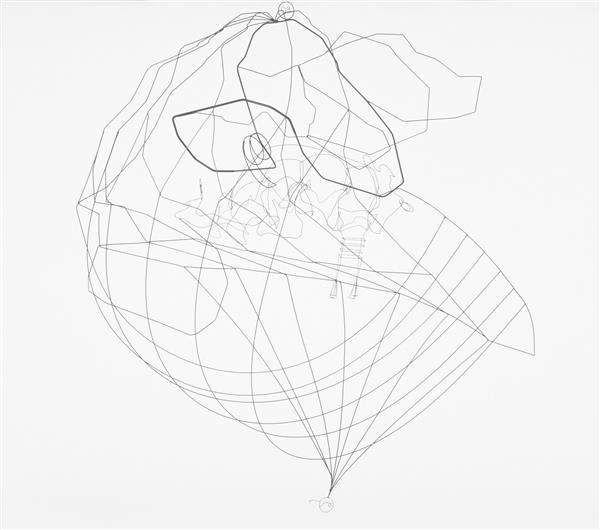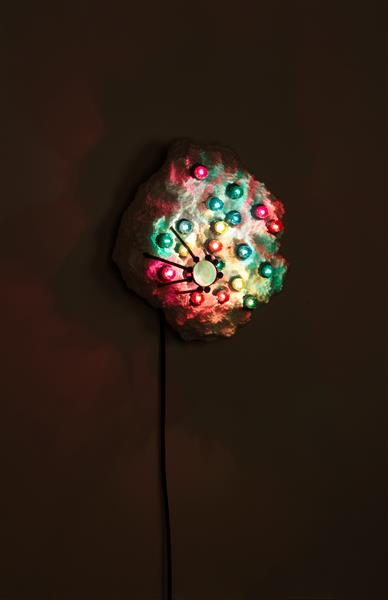Map 3
mahony
mixed technique on canvas on aluminum
100 × 130 × 15 cm
2011
Acquisition 2011
Inv. No. 0214
Currently, Jenny Wolka, Clemens Leuschner and Stephan Kobatsch are commuting between Vienna und Berlin – a comparatively manageable trip for Mahony's members, because they are known to be travelers between continents and in the interdisciplinary cosmos. Many works display interaction with geography and history, or are concerned with often unobserved objects outside the periphery of European society. For such “frequent travelers”, the contact with applicable map material is an advantage – Mahony does it both conceptually and procedurally.
Map, a series of plastic map objects, primarily asks questions about localization, figuratively and poetically. The series began in 2011 and continues to this day in different variations (currently with the integration of script and motifs). Map 3 (from the first, ten-part series) is a landscape-format piece with strong map connotations. The work is, in an enchanting way, contradictory on many levels. For example, it is object, graphic and painting all at the same time. The point of origin is a watercolor that has been transferred, worked over many times, onto canvas and then onto aluminum. The process of over-working is an essential element that leaves grazes, scratches and marks behind. The creases in the metal – arranged like the Leporello-type folds of paper maps – buckle the underlying layers of color and material though the working of the crease. According to place and the effect of light and shadow, the piece creates singular geometries, spaces and points of reference. Mahony calls this “spanning the space” created by the folds. With its impression of paper-like lightness, and actual, stable materiality, the work alternates between lightness and weight, flexibility and rigor. Because there is no conversion of a particular part of the Earth's surface, the tension in the form is also sustained content-wise, as Map 3 doesn't show a concrete place. In the middle to the right, there is a diffuse, bluish, washed-out triangle, similar to a simple floor-plan. It is recognizable, but not categorizable. A similar phenomenon arises with the white spots on historical maps. These unexplored areas are adorned with a plethora of decoration: flora and fauna for land masses, sea-monsters and ships for oceans (see Nils Büttner, Die Erfindung der Landschaft, Göttingen: 2000, pg. 61). For artists in past centuries, the “horror vacui”, or fear of empty space, opened a fertile field for activity. Today, one believes, thanks to scientific and technical possibilities, on the measurability of the earth. In Map 3, Mahony shows undefined and grey-zones, traces and layers of that which is gone as well as the unknown, thereby rewarding us with the possibility of considering the impossibility of places.
Heike Maier-Rieper, 2015 (translation: Virginia Dellenbaugh)
Continue readingPublications
evn collection. 95–2015 Jubilee, Vienna 2015, p. 259–262



